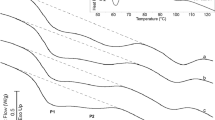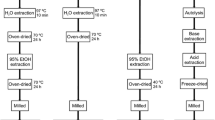Abstract.
A range of casein hydrolysates was produced using different commercial enzyme preparations. The resulting hydrolysates were characterised extensively for physico-chemical and functional properties such as foaming, emulsification and water binding capacity. A sodium casein hydrolysate of limited degree of hydrolysis (DH), which exhibited superior in vitro functional properties, and an extensively hydrolysed hydrolysate from acid casein, with inferior in vitro functional properties were selected for applications in baking. Bread was produced to a standard procedure and the casein hydrolysates were incorporated at 1 wt% and 4 wt% (flour basis). Batches were also produced without hydrolysate and with unhydrolysed material (also at 1 wt% and 4 wt%). All bread batches were evaluated using standard baking tests, crumb firmness testing and crumb grain image analysis. Bread made using the sodium casein hydrolysate was generally inferior in quality compared with the control, while incorporation of the extensively hydrolysed acid casein hydrolysate improved performance. Furthermore, the results indicate that in vitro functional properties are inadequate predictors of applied functionality in a complex system such as bread.
Similar content being viewed by others
Author information
Authors and Affiliations
Additional information
Electronic Publication
Rights and permissions
About this article
Cite this article
Crowley, .P., O'Brien, .C., Slattery, .H. et al. Functional properties of casein hydrolysates in bakery applications. Eur Food Res Technol 215, 131–137 (2002). https://doi.org/10.1007/s00217-002-0510-5
Received:
Revised:
Issue Date:
DOI: https://doi.org/10.1007/s00217-002-0510-5




